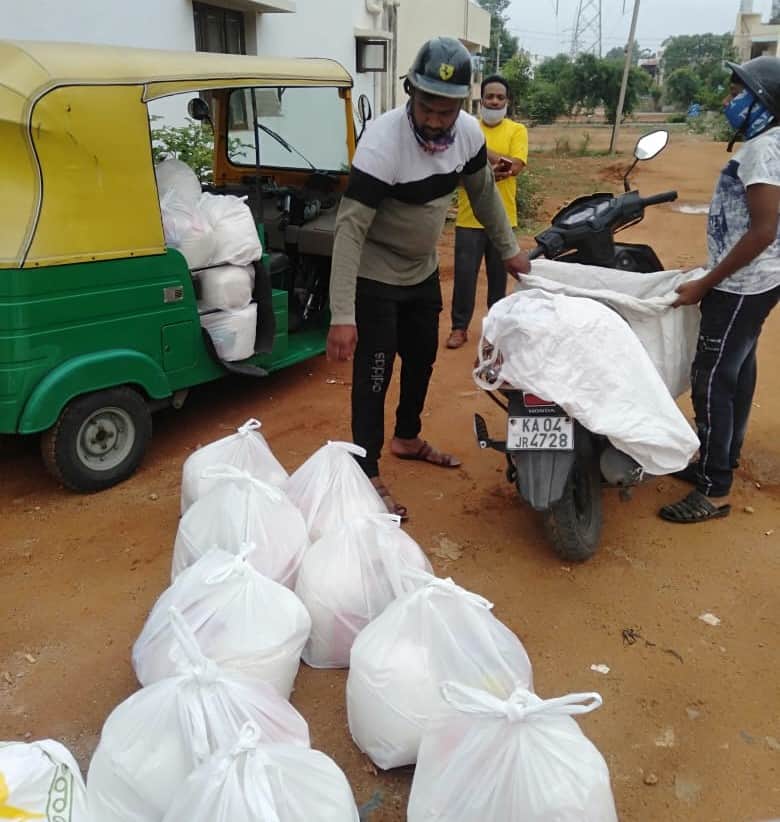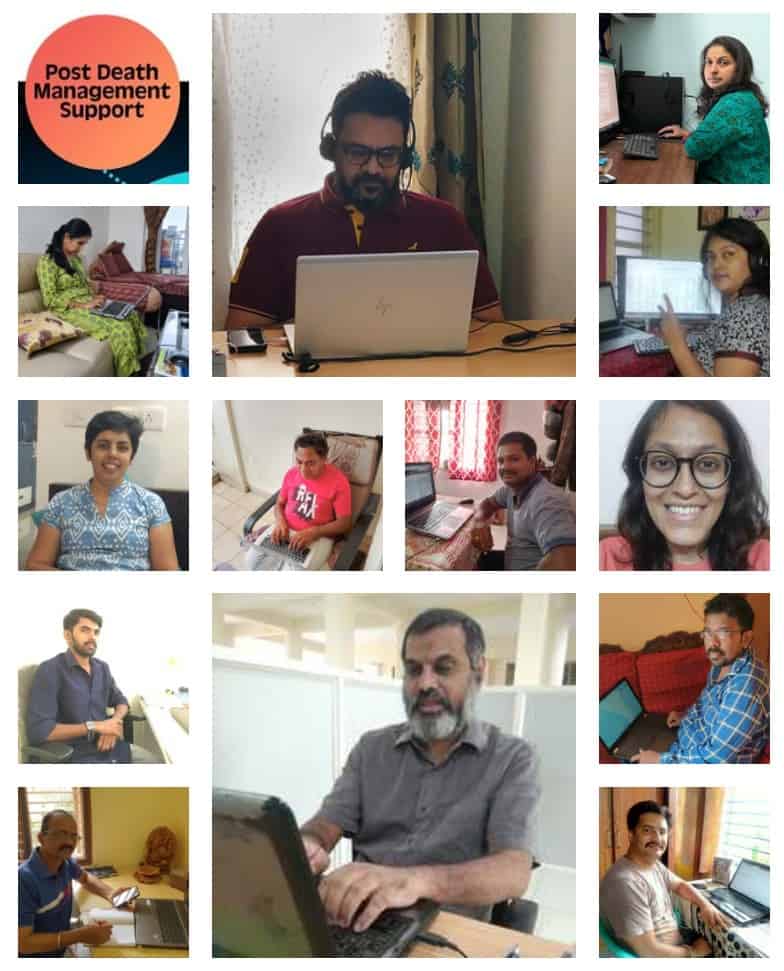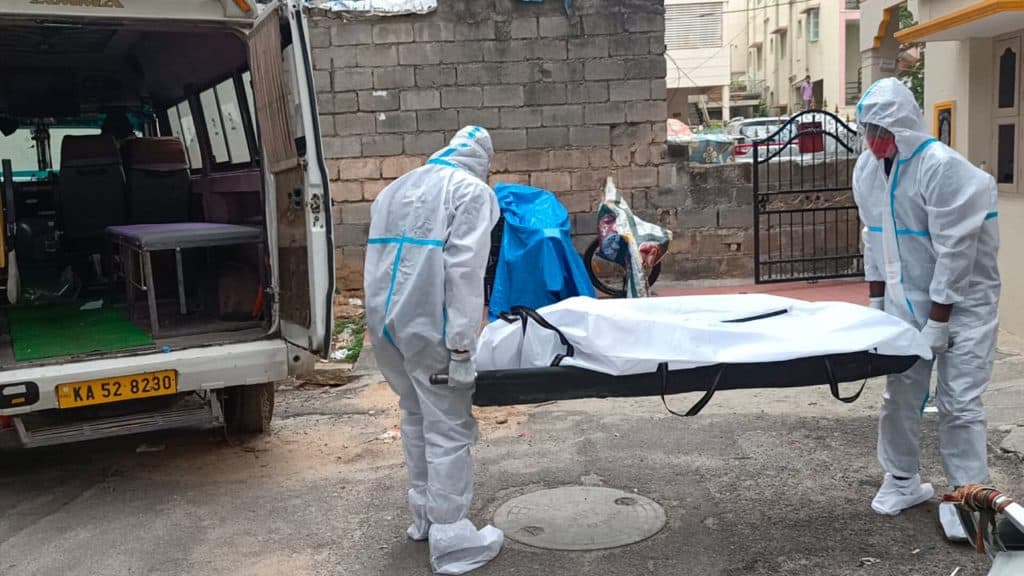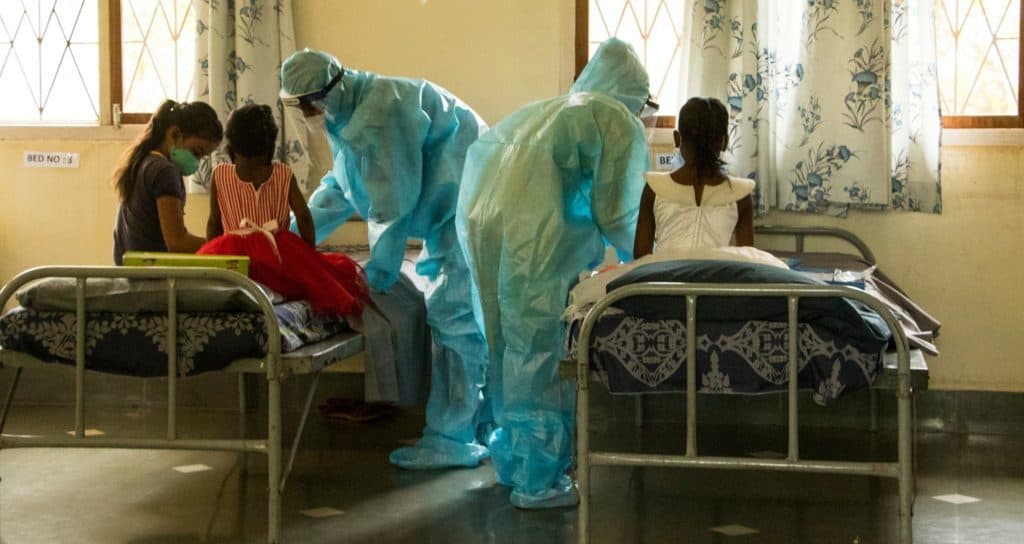Even as the entire government machinery was deployed to handle the second wave of COVID, we have seen many gaps in how it was managed. Workers have been struggling without income, and thereby, food. Oxygen shortage left several patients dead and their families helpless. The city’s crematoriums, at the peak of the second wave, were unable to handle the increasing body count. In almost every aspect of COVID management in the city, voluntary initiatives played a crucial role in identifying shortcomings in the official response and bolstering it with a hands-on approach.
Here are some of those initiatives.
A DIY food relief model
Last year, a week into the nationwide lockdown, Nisha Abdulla got a distress call from an acquaintance in Shivaji Nagar. The caller had no food for the next day. After reaching out to the community, a team of six including Nisha started going around their own neighbourhoods, identifying low-income homes in need of food. This was the start of what officially became the ‘Bangalore Pledge Project‘ during the present lockdown.
The project has a unique, easily replicable model:
- Identify a low-income community in the neighbourhood. This is easy, Nisha says, because most neighbourhoods in Bengaluru have a mix of apartments and low-income settlements. You can either walk around the neighbourhood, check with your acquaintances, or ask someone you already know from the community, such as your domestic worker. Coordinate with a volunteer from the community, who will know the community’s needs.
- Visit your local store, and ask the shopkeeper how much essentials (grains, pulses, masalas, oil, soap, etc) they can provide in a kit costing Rs 1,000. Ask the shopkeeper to make a bill. Each such kit would last a 4-member family around 10-12 days.
- Put out the requirement for the kits on social media, and ask people in your network to sponsor these.
- Once you collect the money from the sponsors, you can pay it to the shopkeeper directly over Google Pay or so. The community volunteer can pick up the kits and distribute it among the households.

Nisha says that, in the 2020 lockdown, they collected Rs 10 lakh and served 1000 families. “The calls were first from daily wagers, then from migrant workers. And later, as the crisis worsened, even lower-middle income groups like autorickshaw drivers and carpenters started asking for help. The calls tapered down by July end, as they started going to work again.” This lockdown, the team started getting distress calls from the third week of April, and up till June 1. During that period, they collected Rs 26 lakh and served over 2600 families.
“People have been keen to contribute because this is a transparent, credible model. The money doesn’t go to anyone’s account but only to the shopkeeper directly,” says Nisha. With full year of financial distress, possible expenses for COVID treatment in low-income families, and an expected third wave, there is a dire need to keep the project going, she says.
So far, 5-6 people have replicated the model. One of them, Padmalatha Ravi, says, “Recently I started the project in three neighbourhoods myself. If I’m not familiar with a neighbourhood, I ask a friend there to identify a person from the community, and then I take it forward.”
Read More: These COVID relief initiatives in Bengaluru need your support
A helpline for funerals
As the death toll climbed and there were long queues of the dead at crematoriums, Namma Team joined hands with the government, bringing relief to the shocked and grieving families. “We make sure the cremation happens on the same day,” says Abdul Razak N, who heads the cremation support vertical of Namma Team.
Namma Team includes the general public, as well as top bureaucrats like Major P Manivannan, in their individual capacity. Major Manivannan, who was vice chairman of the government-appointed crematorium task force, had got Namma Team involved.
“The system had to be set up in early May. A team of volunteers here and in the US together developed, deployed and tested the software for the platform, all within 72 hours.” While the helpline executives book cremation slots through the crematorium helpline (8495 99 8495), the Namma Team volunteers work in the back end. They coordinate with ambulance drivers, crematorium staff, hospitals, government officers, patient’s family, etc to ensure the process is smooth. All 70 volunteers in the team – which includes IT professionals, home makers, entrepreneurs – work remotely.

Abdul says, “Once the helpline executive books a slot, these details come to us. We then call the family and ask what help they need. In many cases, the family members are in shock, and even the simplest things are difficult for them to do.”
The families sometimes request an ambulance, support in arranging documents, or to sort out any problem with the slot that was booked. “Sometimes the hospital refuses to hand over the body to the family if they haven’t paid yet. In such cases, we quote government orders that clearly say the body should be released.”
In 1-2% of cases, the family would request support on the ground. Volunteers then request someone from the civil defence team (a collective of citizens trained to give support during disasters) to go to the household, who in turn will give emotional support, ensure immediate needs like food and medicines, etc for the family.
For instance, there was an elderly man who passed away in the night who only had an elderly relative in the household. There were also a couple of cases of infants who died, but their families didn’t want to be involved, he says. Handling such cases have led to stress among volunteers, Abdul says, adding that they are encouraged to seek counselling themselves.

Once the system was set up, the wait time for cremations reduced drastically, says he. As of last week, the helpline was getting around 125 calls per day. If cases reduce further, the volunteers may train BBMP to run the system and then transition out, he says.
COVID centres for children
In the second wave, many children were left alone when their parents either died or were hospitalised due to COVID. To support these children, in mid-May, the NGO Dream India Network (DIN) set up a CCC for infected children in the 6-18 year age group. The ‘Divine Grace’ centre in KR Puram can accommodate 50 children, and the number can be expanded to 75. DIN also runs three quarantine centres – one centre each for boys and for girls aged 12-18 years, and another for all children aged 6-11 years.

The concept came about when a few children in Whitefield were left alone. Uma Mahadevan, nodal officer to coordinate COVID aid from private groups and NGOs, formed a Whatsapp group of organisations that work with children. “Since the cases were in Whitefield, she asked us also to look into it,” says Zibi Jamal of the citizens’ group Whitefield Rising.
Whitefield Rising then coordinated with DIN to kick off the project. While DIN runs the centres with the necessary staff and facilities, Whitefield Rising liaises with various agencies to secure permissions. Motherhood Hospital does remote monitoring of the children’s health, while Rainbow Children’s Hospital gives advance care if needed. Another partner Aahan Vaahan helps with fund-raising.
As of June 3, there were 17 children in the CCC; and 34 in all the three quarantine centres combined. While the staff in the facilities – doctors, ayahs, housekeeping staff, etc – are paid, the core team works as volunteers.
“Even when the cases reduce, the facilities will be run in a minimal capacity. This is for disaster preparedness. If there is another surge, it will be difficult to set up the facilities again from scratch,” says Zibi.
Read More: Open letter to CM on COVID management in Bengaluru
Never alone in a crisis
The COVID Care Mitra platform was launched on May 9, for Bengalureans who live alone and need help during COVID. Maggie Inbamuthiah, one of the founders of the platform says, “There are a lot of single people in Bengaluru, including those who come here for work, elderly persons whose children live abroad, etc. During lockdowns, resources are difficult to access, especially for those who are incapacitated. If the person becomes COVID-infected, they go through a lot of fear as well.” Those who live in independent houses especially, wouldn’t know their neighbours and would have no one to check in on them.

COVID Care Mitra has a core team of five including Maggie, and 60 volunteers. Citizens in need of help can text them through social media, and the team will call back. Maggie says they have helped a range of people in varied ways – ensuring they get groceries, connect them to other services, or just check in on the person regularly.

“A person who lives abroad had requested us to check in on his elderly father. His mother was in the ICU then. She passed away in 3-4 days. We called the father every day to make sure he was fine. Since he needed help, we also arranged for a helper to stay with him for a few days,” says Maggie.
In another case, they connected a COVID patient to the ‘Namma Team’ volunteer group, to help them get a hospital bed. The team plans to continue their work for the next 6-7 months at least, given there could be further waves of COVID and more lockdowns.
Bolstering BBMP health centres
LabourNet – an organisation that skills those from disadvantaged groups and connects them with potential employers – is arranging oxygen concentrators for BBMP health facilities and also training vaccinators. Gayathri Vasudevan, who heads LabourNet, says the Delhi-based volunteer group Mission Oxygen have provided them with 150 oxygen concentrators. Gayathri is working with BBMP to deploy these in COVID Care Centres (CCCs).
Given the reduced need for oxygen now, these machines can be used later for treatment of COPD (Chronic Obstructive Pulmonary Disease) or during delivery in BBMP maternity homes, says Gayathri. “Most people don’t use BBMP facilities because they lack facilities like oxygen. We are also training staff at the centres on when and how to use oxygen concentrators, and how to maintain these.”

LabourNet has also been facilitating training for dentists and Ayush doctors who have been deputed to give vaccine shots. They plan to train 50,000 vaccinators across multiple locations, including Bengaluru. They have already organised 3-4 camps with trained personnel.
Nice positive story, Navya.